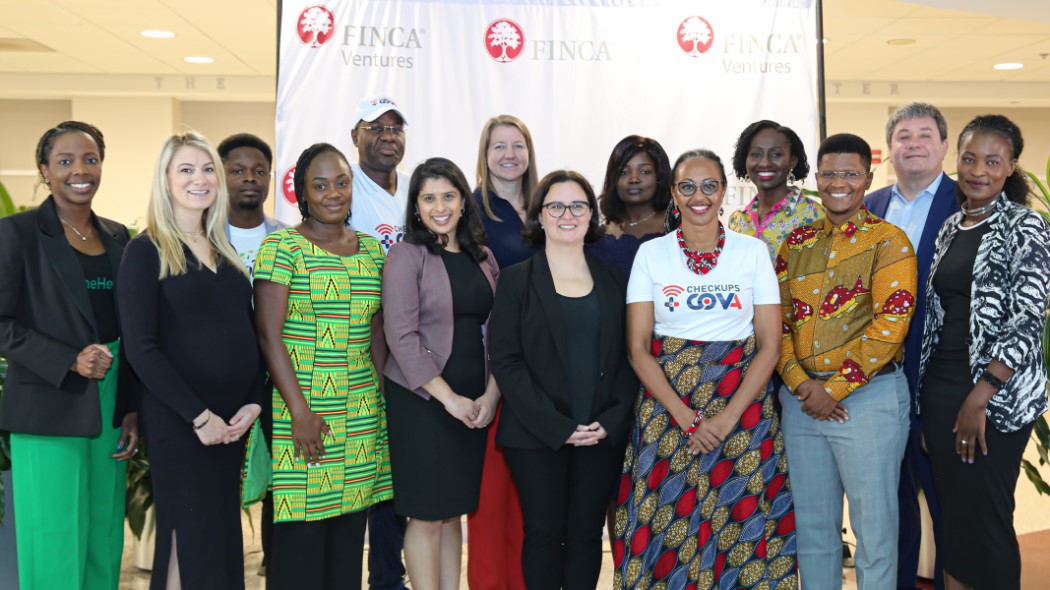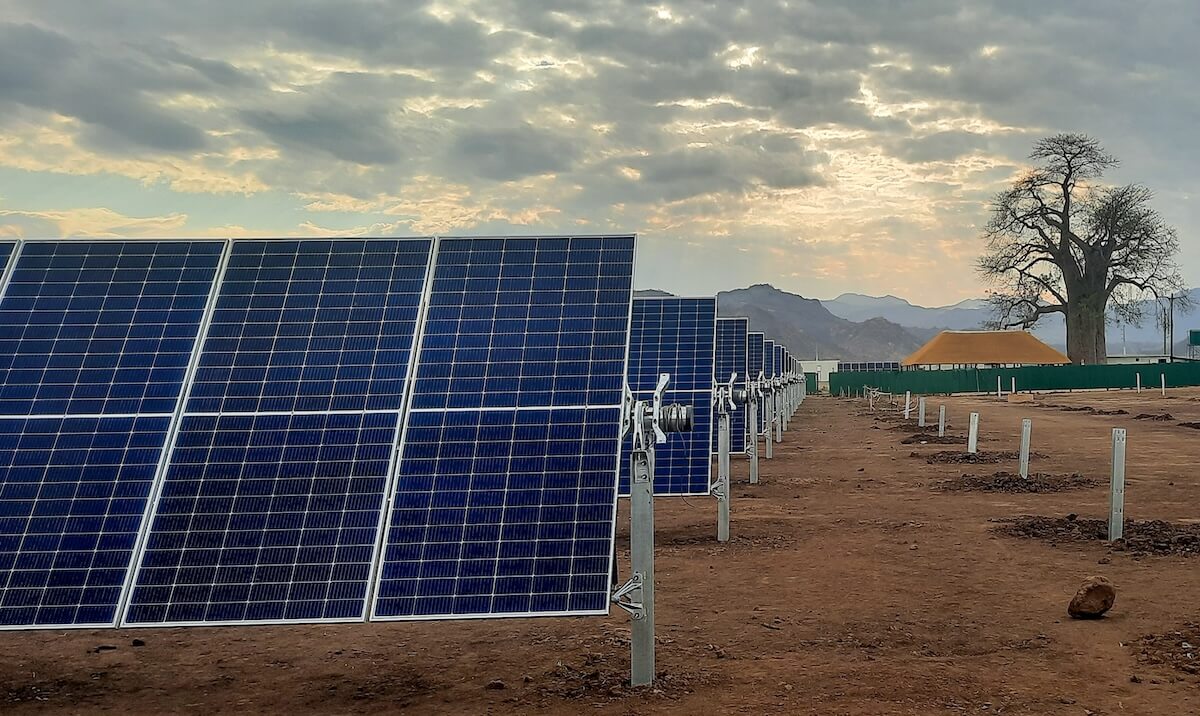Something changed in 2018. For years, Caprock Group’s Matthew Weatherley-White has found families and institutional investors ‘skeptical but interested’ in impact investing.
In the last nine months, “The conversations have shifted from ‘I don’t think we should do this, but I’m happy to listen,’ to, ‘We really want to do this. Can you help us understand the on-ramps?’ Weatherley-White said on last month’s ImpactAlpha’s Agents of Impact Call No. 6. “That’s transformative.”
The Call helped round up a year in which impact investing broke through from feel-good to a legitimate source of risk-mitigation and investment advantage, er, impact alpha.
Impact America Fund’s Kesha Cash cited the firm’s investment in Mayvenn, which is reshaping the African-American hair-care market, and boosting livelihoods of mostly low-income stylists. “We are experts in understanding the nuances of overlooked and underserved communities,” Cash said.
Enterprise Community Partners’ Rachel Reilly says holistic, integrated and community-based strategies can de-risk Opportunity Zone investments as investors rush this year to take advantage of capital-gains tax benefits. Bank of America’s Jackie VanderBrug says the bank’s quant researchers and financial advisors have concluded that environmental, social and governance performance is better than they could have imagined, and “too good to miss.” The “gender alpha” is real, VanderBrug says. Stanford’s Alicia Seiger says a rising appreciation of systemic risks are driving pension, sovereign and insurance funds toward low-carbon investments.
How are your impact investing conversations transforming? Drop us a note at [email protected] or on ImpactAlpha’s subscriber-only Slack channel.
Seeing what others don’t
Impact America Fund’s Kesha Cash talked about the impact alpha in inclusive prosperity.
Cash says that when she came upon Mayvenn, a product distribution platform for hairstylists, she recognized a market opportunity traditional investors didn’t recognize and a model for impact that impact investors didn’t understand.
Mayvenn was bringing efficiency to the $9 billion African American hair care market, which wasn’t on the radar of most venture capitalists. The startup was also bringing a new source of income to mostly rural hair stylists before conversations around economic justice and income creation had penetrated impact investing circles.
“We are looking for those opportunities where there is clear deep impact, systemic impact,” says Cash. Cash invested, and wrangled subsequent investors, including Andreessen Horowitz, on board. Last month, the firm raised $23 million in a Series B round led by Essence Ventures. “If we can get this right, we will flip a switch and change the way business is done in and for underserved and overlooked communities,” says Cash, and at the same time find, “big opportunities that will attract, in Mayvenn’s case, the likes of an Andreessen-Horowitz that says, we see a fragmented market, we see a big market opportunity, and icing on the cake, this is actually having impact for an overlooked community.”
Queen Latifah supports Essence fund for women of color in the arts
Finding an investment edge in broadening opportunities for communities of color requires a certain kind of cultural competency and industry expertise, says Cash. “In the case of solving complex, nuanced social justice issues, you can understand the market, behaviors, trends, but you have to understand of the community, and that comes with years and years of lived experience.”
That’s no different than being an expert in pharma, for example, says Cash. “At Impact America Fund, we are experts in understanding the nuance of overlooked and underserved communities.”
Impact is insurance in Opportunity Zones
Enterprise Community Partners’ Rachel Reilly laid out the Opportunity Zone opportunity.
That is: Opportunity Zone investment strategies that engage and drive wealth in communities are likely to better investments. “There’s a real case to be made around working with localities, working with communities on the front end,” says Reilly. “That’s part of your risk-mitigation strategy.”
Engaging with stakeholders and understanding a community’s long-term growth strategy demonstrates you’re a partner, she says, and “is one way to protect your asset over the long-term.”
In a way, long-term partnership is built into the tax bill. “The graduated tax benefit, with the maximum being after year ten, is to encourage those long-term holds in funds and in communities.”
How can investors work with communities? Says Reilly, “Working with community development finance institutions and others that can help you do that if you’re not already engaged in communities where you want to invest only helps to mitigate risk and preserve principle, and mostly likely return higher yields on those deals.”
Too good to miss
Bank of America’s Jackie VanderBrug said gender alpha is for real.
Individual and institutional investors are coming around to the notion of risk mitigation and alpha in impact, says VanderBrug. Bank of America’s quant equity researcher, says VanderBrug, is beating the drum that ESG, or environmental, social and governance investing, is ‘too good to miss.’ “When someone who advisors and clients have looked to for 20 years in term of the equity markets is saying ‘this is a trend that is better than I could have imagined,’ that’s important.”
Gender-smart investing is one area where this trend is clear.
And the bar is rising. Gender smart investing is no longer putting one woman on a board. “The research and action has gone specific,” says VanderBrug. It’s looking at “diverse boards and women in management and company policies.” Higher scoring firms are going to see lower price to earnings per share volatility and higher subsequent ROE (return on equity), she says. The interesting thing, says VanderBrug, is the layers intersection of gender with race, gender with underserved communities.
“We’re beyond the big picture, ‘I’m going to add diversity at a high level.’ But specific to your sector, specific to your geography, specific to your investment disruption case, how does gender play?”
Climate finance continuum
Stanford’s Alicia Seiger has high hopes, paradoxically, for climate risk. Seiger, a board member of the both the Prime Coalition, and who helped found Aligned Intermediary, two climate investors focused on early and later-stage climate finance, respectively, is optimistic about the increasing amount of capital flowing towards climate solutions.
Despite overt support for the fossil fuel industry, the Trump Administration has maintained public funding levels for climate, says Seiger. Philanthropy, through organizations like the Prime Coalition, is also stepping up to fill that gap in early stage funding for climate innovation. Utility-scale energy-storage company Quidnet, an early Prime Coalition investment backed by foundations, this year became one of the first two investments from Bill Gates’ Breakthrough Energy Ventures.
Aligned Intermediary, says, is helping pension, insurance and sovereign wealth funds invest directly in climate solutions by creating new vehicles, such as a blended finance fund that will be developed by the Climate Finance Partnership, announced at the One Planet Summit in Paris. The partnership, which includes the French and German governments, the Hewlett, Grantham and IKea foundations, as well as asset manager BlackRock, will develop an institutional-scale fund for climate infrastructure in emerging markets.
Seiger is also excited about the trillion dollar Norway pension fund’s recent move into renewable energy infrastructure and the New York Common Retirement Fund, which announced at COP24 in Poland another $3 billion commitment to sustainable investing strategies, bringing their total commitment to $10 billion.
“You’re seeing these giants move. There’s an increasing understanding that as long-term investors sustainable investing is a superior strategy,” says Seiger. Getting from billions to trillions still requires a lot of work to change mindset, she says. But “you’re starting to see signs of an enlightenment and a recognition that this isn’t’ about feeling good, it’s about getting the right returns for the risks in your portfolio.”
Getting to yes
Caprock Group’s Matthew Weatherley-White felt a shift in the energy, and perhaps the capital, this year. The challenge: getting wealth holders to say “yes” and shift capital into impact investments.
Weatherly-White says investors are trained to start at ‘no.’ “That’s our default. And there’s some value to that. Getting to a quick no respects entrepreneurs and funds raising capital. Getting to quick no can unclog a diligence pipeline. There’s a host of reasons for starting with no.”
Caprock, says Weatherly-White, thinks about impact capital, “as R&D capital for the kind of regenerative, sustainable, circular economy that we all want to exist in as investors. If we’re looking at it as R&D capital, in the same way that Prime does, than we have to start taking different kinds of risk.”
This requires starting with yes, says Weatherly-White. “At Caprock we try, we don’t always succeed, to start with ‘yes.’ Then we have this we horrifying diligence process where we work through every possible ‘no.’ When there’s no ‘nos” left, then we’re there.” What buttresses that, says Weatherly-White, are a number of high-level “inevitable imperatives” around impact investing. That fisheries need to become sustainable, for example, or the evolution of the global energy complex.
Take oceans. People generally understand ‘healthy oceans’ are a global imperative. But few investment vehicles allow investors to participate in that inevitable theme. “We start off with yes,” says Weatherly-White. “Yes we need sustainable oceans. Yes we need healthy fisheries. But how do we get there?” He says Caprock then looks for investable opportunities, a coherent management team, great diligence and dealflow. “You start walking through that and you end up with a team that can deploy institutional scale capital into these investment themes that before doing that hard work, maybe didn’t’ have a whole lot of absorptive capacity.”











